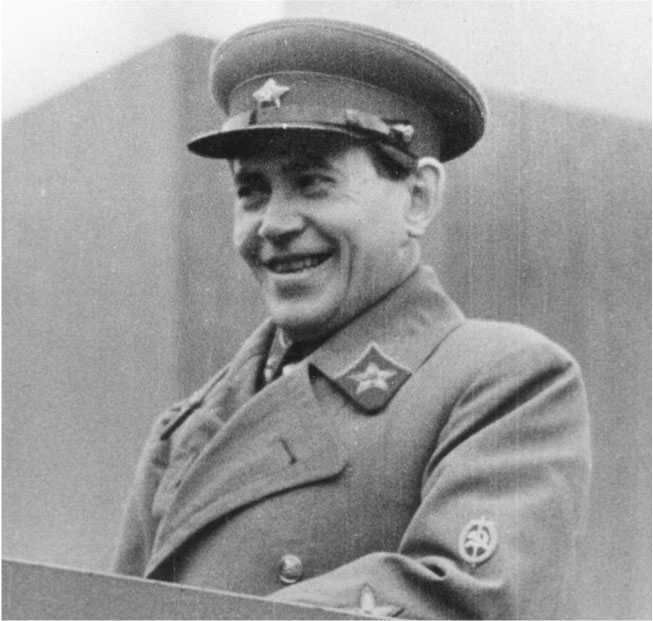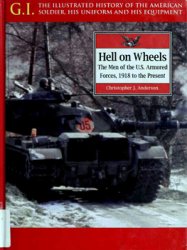Stalin's Great Terror4 is often confused with his purge of the party elite, which began on the day of Leningrad boss Sergei Kirov's assassination: December 1, 1934. Of the 1,966 elite party delegates to the Seventeenth Party Congress of 1934, 1,108 were arrested on charges of anti-revolutionary crimes and 848 were executed in the course of these purges. The decimated party elite was replaced by a new generation of leaders. But party losses, even of these magnitudes, account for only a small fraction of one percent of total repressions between 1937 and 1938. The average victim was a regular person, holding a normal job and leading an average life.
It was not until the end of July 1937 that Stalin was ready for the "mass operations” stage of his Great Terror. In September of 1936, he replaced the soon-lo-be-executed Genrikh lagoda with the fanatical

Photograph of Nikolai Ezhov on top of the Lenin Mausoleum, May 1, 1938.
Nikolai Ezhov as head of the NKVD. Over the next year, Stalin and Ezhov prepared the "once and for all time” elimination of enemies of Soviet power.
Despite earlier mass campaigns, Stalin remained convinced that his enemies were multiplying. Members of banned political parties had been removed from responsible offices, but they were still alive. German, Lithuanian, and Polish workers were still employed in defense factories. Two million citizens had been "disenfranchised” as politically unreliable.5 The victims of the 1930-1932 collectivization and dekulakization campaigns were finishing their prison or exile terms, and as many as a quarter million kulaks had fled to the cities or illegally blended into collective farms.6 Regional party secretaries and NKVD officials warned Stalin of "growing bases for insurgent rebellions” and of large influxes of "alien elements” into their territories. Outlandish tales of mass poisonings and sinister plots spread, encouraged by the fantastic confessions of former party leaders at the Moscow Show Trials. An alarmed Stalin called for increased vigilance to "check every party member and every non-party Bolshevik.”7
Ezhov's Order No. 00447 was designed to solve a major logistic and operational task: the elimination, through execution or long prison sentences, of a large number of persons whom Stalin considered to be his enemies in a short period of time. In its original form, Order No. 00447 called for the execution of 75,950 and the imprisonment of 193,000 in four months' time, from start to finish. With a five-day week, this target required 883 executions and 2240 prison sentences per day. Victims had to be identified quickly, evidence had to be kept to a minimum, and the pace of operations could not be slowed down by judicial proceedings. Even with its limited protection of civil rights, the "regular” justice system could not produce such numbers. Rather, extraordinary measures had to set aside existing rules and "justice” had to be dispensed with "simplified procedures.” Ezhov's decree constructed a "conveyer” (the term used in 1937-1938 to describe the Great Terror) to process large numbers of victims.




 World History
World History









